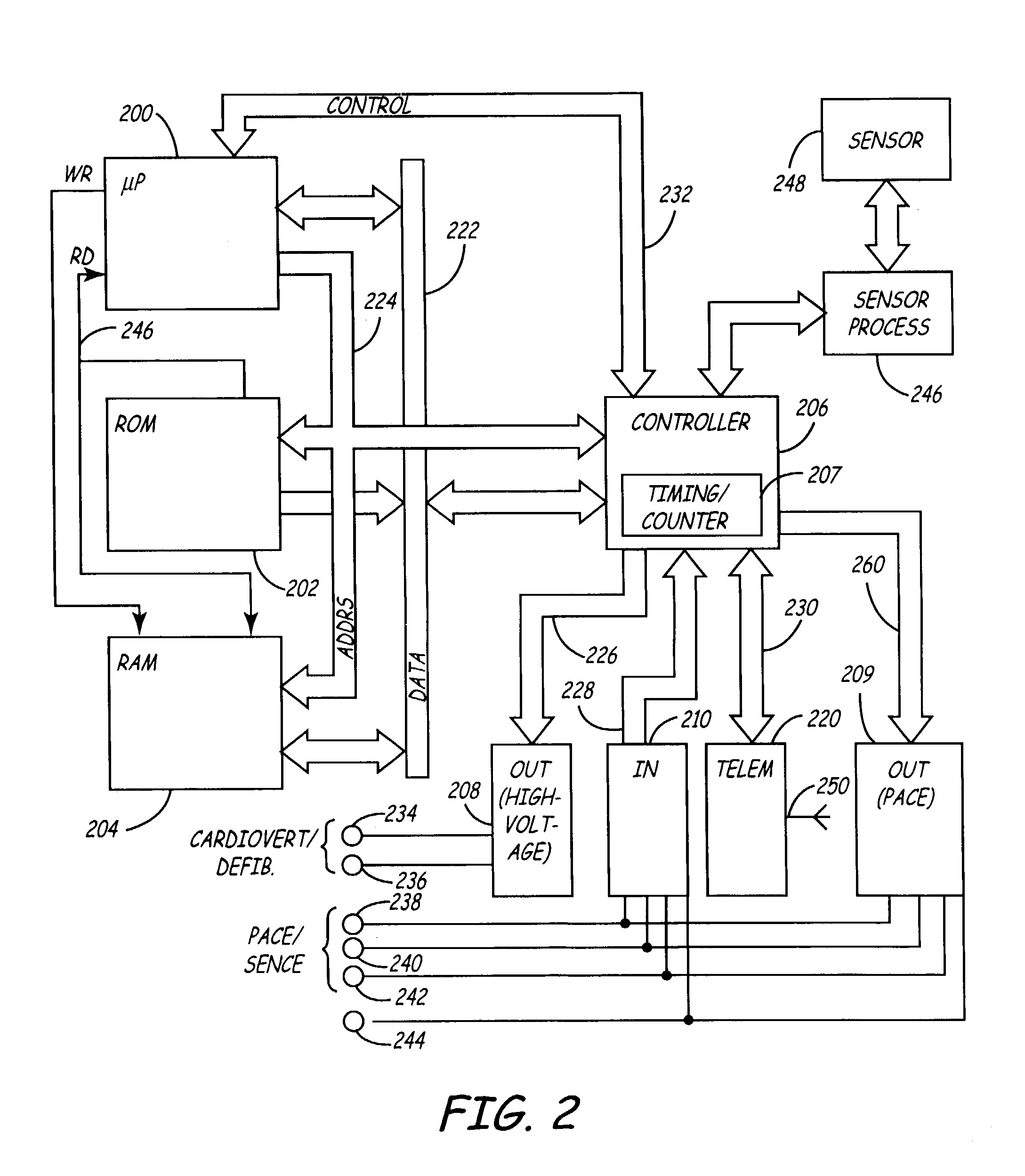Apparatus and method using ATP return cycle length for arrhythmia discrimination
- Summary
- Abstract
- Description
- Claims
- Application Information
AI Technical Summary
Problems solved by technology
Method used
Image
Examples
Embodiment Construction
[0023]The present invention relates to an apparatus and method for determining whether a detected tachyarrhythmia is supraventricular tachycardia (SVT) or ventricular tachycardia (VT). Principally, antitachycardia pacing pulses are delivered, and after the last pulse, the system monitors the time before an intrinsic heart beat is sensed. If the time it took to sense the intrinsic heart beat is longer than a predetermined time window, the system classifies the tachycardia as an SVT. This conclusion is made on the reliance that because the antitachycardia pulses would normally result in the AV node being in a refractory condition, an impulse from the atrium will not make it through the ventricle right away. Whereas, if the impulse started in the ventricle, implying the possibility of a ventricular tachycardia, an intrinsic heart beat would be sensed sooner because the pulse does not have to travel through the refractory AV node.
[0024]The present invention provides various embodiments ...
PUM
 Login to View More
Login to View More Abstract
Description
Claims
Application Information
 Login to View More
Login to View More - R&D
- Intellectual Property
- Life Sciences
- Materials
- Tech Scout
- Unparalleled Data Quality
- Higher Quality Content
- 60% Fewer Hallucinations
Browse by: Latest US Patents, China's latest patents, Technical Efficacy Thesaurus, Application Domain, Technology Topic, Popular Technical Reports.
© 2025 PatSnap. All rights reserved.Legal|Privacy policy|Modern Slavery Act Transparency Statement|Sitemap|About US| Contact US: help@patsnap.com



